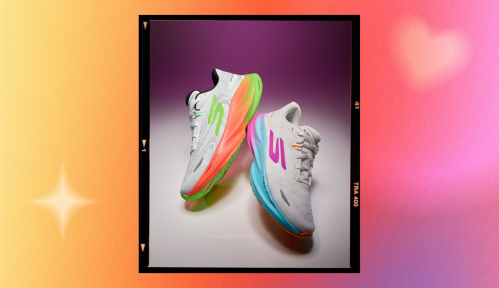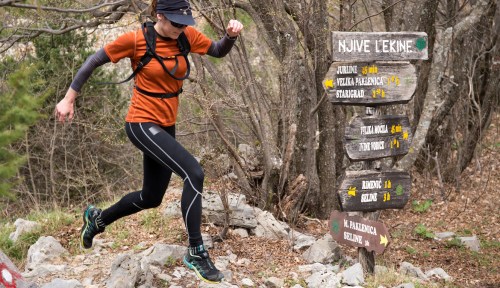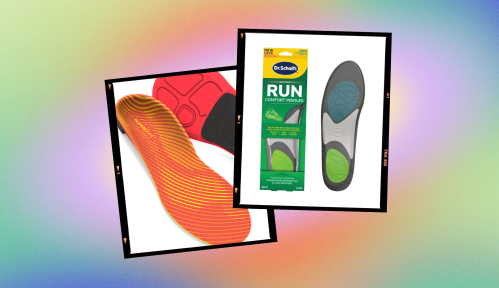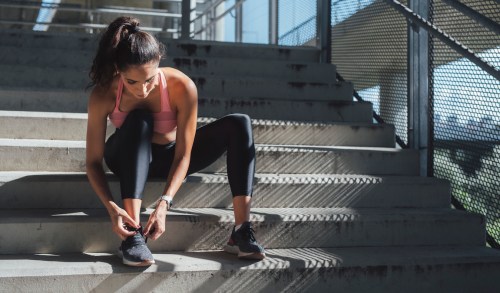Our editors independently select these products. Making a purchase through our links may earn Well+Good a commission
The 7 Best Shoes for Orangetheory, According to Trainers
From treadmill sprints to strength circuits, these shoes were made for earning splat points.

Orangetheory Fitness isn’t just a workout—it’s a bonafide movement. Since launching in 2010, OTF (as it’s called for short) has exploded in popularity, with more than 1,500 studios and a dedicated fan base that swears by its science-backed mix of rowing, running, and strength training. After hearing countless friends rave about their “splat points” (OTF-speak for tracking effort levels), I finally took the plunge last July, eager to boost my endurance, build strength, and shake up my routine.
Experts in This Article
vice president of fitness for Orangetheory Fitness
certified personal trainer, exercise nutrition coach, and author at Garage Gym Reviews
What I wasn’t prepared for? How much my shoes mattered. Orangetheory’s high-intensity intervals demanded a sneaker that could handle treadmill sprints, explosive weight training, and all-out rows—without compromising stability or comfort.
So began my mission to find the best shoes for Orangetheory. Over the course of a year (and 15 different pairs), I tested everything from cushioned running sneakers to cross trainers, searching for the perfect fit. Here’s what I learned, plus seven of the best pairs of shoes for Orangetheory.
The best shoes for Orangetheory, at a glance:
- Best overall: Nike Metcon 9, $113
- Best for high-impact: Adidas Rapidmove Adv HIIT 2, $120
- Best zero-drop: Altra Escalante 4, $130
- Best for gym junkies: Reebok Nano X5, $150
- Best for runners: Asics Gel-Cumulus 27, $140
- Best for travel: Tracksmith Eliot Runner, $198
- Best budget: On Cloud X 3, $90
What is Orangetheory Fitness?
OTF is an hour-long interval workout that is split into separate sections—and, typically, a portion of the work is spent on a rowing machine, the next involves a treadmill, biker, or strider, and the last focuses on functional strength and resistance training (the order of which will vary per class.) During the workout, OFT members wear monitors that measure heart rate, and each member’s performance statistics are displayed on monitors around the studio with their names or initials.
Indeed, the workout will bring the inevitable rise in heart rate, and your level of output is color-coded according to five heart rate-training zones: gray, blue, green, orange, and red (with gray being the easiest effort, and red being “all-out”). According to the OFT website, “the goal is to spend 12 minutes or more with your heart rate elevated in the ‘The Orange Zone’ to boost your metabolism, burn fat, and burn more calories,” and achieving the said goal earns you “Splat Points.” (If you want to learn more about the workout program, our beginner’s guide to Orangetheory Fitness is a great place to start.)
The classes I’ve taken have involved about 30 minutes of cardio, 10 to 15 minutes of rowing, and 15 minutes of weight training. I usually spend most of the workout jogging, which is why finding supportive running sneakers—and ideally, a pair that I can also lift weights in—was imperative for me.
What to look for in shoes for Orangetheory
According to Scott Brown, vice president of fitness at Orangetheory, the ideal shoes for the workout will provide ample cushion and support. You also want to consider your own unique foot anatomy in order to find shoes for Orangetheory that will be comfortable to wear throughout the class—in other words, “They should fit well and prevent foot rubbing or cramping,” he says.
Additionally, you’ll want sneakers that provide traction underfoot. Shoes that feature a good grip will keep you steady on your feet as you run, row, and lift weights while preventing accidental slips and spills. Breathability is another important factor. To avoid sweaty soles, look for sneakers with mesh uppers, says Brown. Shoes made from knit fabrics, or that have features to optimize airflow, such as perforations, will also keep you cool while you sweat.
Just as it’s important to know what to look for in an ideal pair of shoes for Orangetheory, you’ll also want to know what to avoid. For one, you’ll want to avoid shoes that are heavy, says Brown. Clunky shoes can be cumbersome to wear during the running portion of an OFT workout, and not to mention, are difficult to squeeze into the foot straps of a rowing machine. He adds that you’ll also want to avoid shoes with too much flexibility. Generally speaking, the more flexible the shoe, the less support it provides—and if you can fold a shoe in half or twist it with ease, it’s likely that it’s much too flexible to provide you with the appropriate amount of support. Personally, I would also suggest avoiding shoes with plenty of foam and lift, which can throw you off balance when you’re lifting free weights.
With that said, you needn’t purchase a weightlifting-specific shoe. “While Orangetheory workouts do include a functional strength floor block, you will not be lifting heavy weights,” says Brown. “[Weightlifting] flat-sole shoes often feature plastic or hardwood soles, and lack the arch support needed for the demands of high-impact training, such as running.”
In short, the best sneakers for Orangetheory will neither be too rigid nor too flimsy, and they will offer ample stability and support for your feet.
The 7 best shoes for Orangetheory
The best types of shoes for Orangetheory is footwear that is versatile enough for all the program involves, including running, rowing, and some light weight lifting—and the best cross-training shoes fit the bill. Cross-trainers fit the needs of more than one activity, and they often combine comfortable support and the stabilization. While you can opt for specialized footwear, like running or rowing shoes, it’s nice—for both you and your wallet—to have a single pair that you can rely on for all the activities that take place in a typical OFT workout. Here are 7 of our favorites.
Best overall: Nike Metcon 9, $113
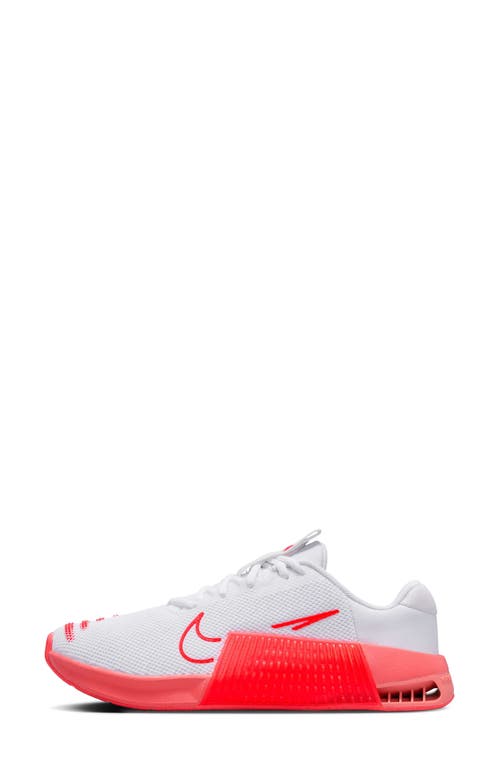
Nike Metcon 9
$112.50
25% off
Stable, soft, and secure, the Nike Metcon 9s checks most of the boxes for a cross-training shoe. The pair’s foam midsole promises springy cushioning on runs, while the lightweight mesh upper keeps your feet cool inside sweaty classes. This version also has an updated Hyperlift plate in the heel that’s even bigger than the previous iteration, which delivers a really grounded feeling for extra stability while lifting weights. Another plus? “They have a wide toe box,” says personal trainer Rachel MacPherson, BA, CPT, CSCS. The wide toe box not only provides ample room for those with wide feet, but also reinforces stability. Whether you’re looking to run, row, or lift weights, the Metcon 9s can handle it all.
Best for high impact: Adidas Rapidmove Adv HIIT 2, $120
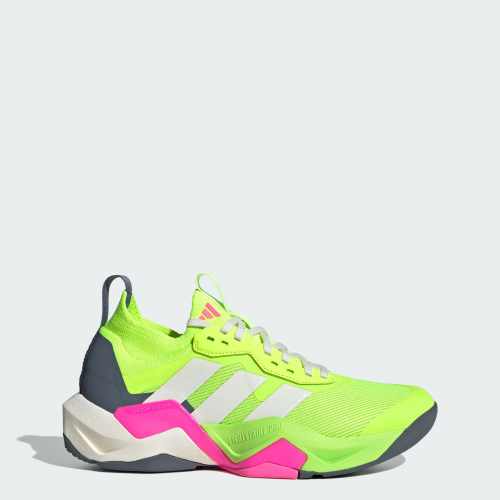
$120
Blending the brand’s signature (and bouncy!) Lightstrike Pro cushioning with their supportive Torsion System, this shoe was designed to deliver a clutch blend of stability and responsiveness that HIIT workouts like Orangetheory require. And boy does it deliver. You get the soft landing on the run and locked-in steadiness during lateral movements, while always feeling light on your feet—even towards the end of class. Bonus: unlike some traditional “strength training” shoes, these flex well for floor exercises like mountain climbers and burpees.
Best zero-drop: Altra Escalante 4, $130

$140
These are one of our favorite go-anywhere, do-nearly-anything shoes—so you better believe that includes Orangetheory. This zero drop, flexible trainer manages to pack in just enough soft cushioning for high-impact exercises without carrying a shred of unnecessary bulk. It fits like a glove and delivers outstanding ground feel, which gives us a ton of confidence to go for it in class. Whether you’re hitting the gym, going for long walks, or sneaking in some weekday runs, the Altra Escalante 4 covers all your bases.
Best for gym junkies: Reebok Nano X5, $150

$150
They’re one of the OG cross-training shoes for a reason. Celebrating 15 years of gym sessions, the Reebok Nano X5 just keeps getting more comfortable in its natural habitat. Their intentional dual-density midsole design is noticeable as soon as you slip them on; you’ll feel a pleasant firmness in the heels to keep you stable during strength circuits, and a lighter pep in your step for when switching up to cardio. While they do lean a bit heavier than some of the others, the decoupled outsole (meaning it breaks up the heel and the forefoot) makes it totally runnable. The updated molded plush collar is a nice touch, too: it helps keep your foot locked down while also nixing any annoying mid-class rubs and hot spots.
Best for runners: Asics Gel-Cumulus 27, $140

$140
For some people, Orangetheory is everything. For others, it’s a side dish to their weekly workout routine. If you’re most likely to be spotted running miles as your main mode of sweating, it makes sense to choose an OTF-appropriate style that’s built for daily training. And the Asics Gel-Cumulus 27 definitely fits the bill. The brand's signature Flytefoam Blast+ midsole—which honestly might be our favorite foam across all running shoes today—delivers a plush, cloud-like cushioning without adding a ton of bulk. Sure it’s on the “softer” side compared to some of the more gym-centric shoes on this list, but it’s slightly less stacked and noticeably more stable than a lot of distance running shoes—which is really all you need for rowing and floor work.
Best for Travel: Tracksmith Eliot Runner, $198
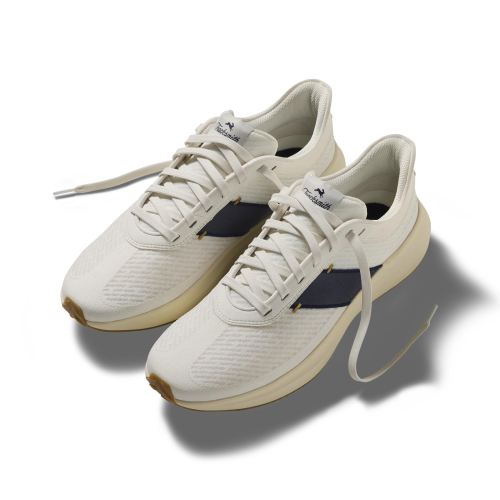
$198
Traveling for work? Visiting friends for a long weekend? If you’re taking your fitness routine out of town and looking for a versatile, low-profile shoe that can do it all (including Orangetheory), the Tracksmith Eliot Runner is a perfect pick. Blending street style and running performance, they look great with a pair of jeans or dress, but also keep you cushioned and supported during high-intensity sweat sessions.
Best budget: On Cloud X 3, $90

$90
40% off
According to TriTrain endurance coach Jason Schneider, the On Cloud X is a fantastic choice for cross-training shoes that allows him to “move easily from the streets to the treadmill, to the strength floor, and right into teaching a studio class without missing a step.” The Cloud X 3 features a wider surface to provide support and improve balance, as well as an integrated “Speedboard” plate, which allows for stable movement in any direction. In combining stability with just the right amount of cushioned support, the Cloud X 3s are ideal for various activities, such as running, rowing, and weightlifting—all of which you are likely to encounter in an Orangetheory Fitness class.
Sign up for the Well+Good SHOP Newsletter
Get exclusive deals on wellness, beauty, fitness, and food products that have been hand-picked by our editors.
Got it, you've been added to our email list.
